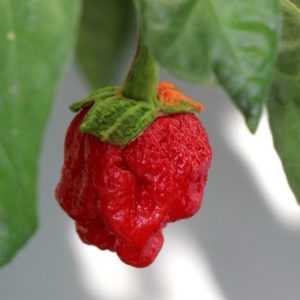Smell and Taste: The Chemical Senses
The two most underappreciated senses can be lumped into the broad category of chemical senses. Both olfaction (smell) and gustation (taste) require the transduction of chemical stimuli into electrical potentials. I say these senses are underappreciated because most people would give up either one of these if they were forced to give up a sense. While this may not shock a lot of readers, take into consideration how much money people spend on the perfume industry annually ($29 billion US Dollars). Many of us pay a lot more for a favorite brand of food because we prefer the taste. Clearly, we humans care about our chemical senses.
Unlike any of the other senses discussed so far, the receptors involved in our perception of both smell and taste bind directly with the stimuli they transduce. Odorantsin our environment, very often mixtures of them, bind with olfactory receptors found in the olfactory epithelium. The binding of odorants to receptors is thought to be similar to how a lock and key operates, with different odorants binding to different specialized receptors based on their shape. However, the shape theory of olfaction isn’t universally accepted and alternative theories exist, including one that argues that the vibrations of odorant molecules correspond to their subjective smells (Turin, 1996). Regardless of how odorants bind with receptors, the result is a pattern of neural activity. It is thought that our memories of these patterns of activity underlie our subjective experience of smell (Shepherd, 2005). Interestingly, because olfactory receptors send projections to the brain through the cribriform plate of the skull, head trauma has the potential to cause anosmia, due to the severing of these connections. If you are in a line of work where you constantly experience head trauma (e.g. professional boxer) and you develop anosmia, don’t worry—your sense of smell will probably come back (Sumner, 1964).
Olfaction (smell)
Unlike any of the other senses discussed so far, the receptors involved in our perception of both smell and taste bind directly with the stimuli they transduce. Odorants in our environment, very often mixtures of them, bind with olfactory receptors found in the olfactory epithelium. The binding of odorants to receptors is thought to be similar to how a lock and key operates, with different odorants binding to different specialized receptors based on their shape. However, the shape theory of olfaction isn’t universally accepted and alternative theories exist, including one that argues that the vibrations of odorant molecules correspond to their subjective smells (Turin, 1996). Regardless of how odorants bind with receptors, the result is a pattern of neural activity. It is thought that our memories of these patterns of activity underlie our subjective experience of smell (Shepherd, 2005). Interestingly, because olfactory receptors send projections to the brain through the cribriform plate of the skull, head trauma has the potential to cause anosmia, due to the severing of these connections. If you are in a line of work where you constantly experience head trauma (e.g. professional boxer) and you develop anosmia, don’t worry—your sense of smell will probably come back (Sumner, 1964).
Gustation (taste)
Taste works in a similar fashion to smell, only with receptors found in the taste buds of the tongue, called taste receptor cells. To clarify a common misconception, taste buds are not the bumps on your tongue (papillae), but are located in small divots around these bumps.

These receptors also respond to chemicals from the outside environment, except these chemicals, called tastants, are contained in the foods we eat. The binding of these chemicals with taste receptor cells results in our perception of the five basic tastes: sweet, sour, bitter, salty and umami (savory)— although some scientists argue that there are more (Stewart et al., 2010). Researchers used to think these tastes formed the basis for a map- like the organization of the tongue; there was even a clever rationale for the concept, about how the back of the tongue sensed bitter so we would know to spit out poisons, and the front of the tongue sensed sweet so we could identify high-energy foods. However, we now know that all areas of the tongue with taste receptor cells are capable of responding to every taste (Chandrashekar, Hoon, Ryba, & Zuker, 2006).
During the process of eating we are not limited to our sense of taste alone. While we are chewing, food odorants are forced back up to areas that contain olfactory receptors. This combination of taste and smell gives us the perception of flavor. If you have doubts about the interaction between these two senses, I encourage you to think back to consider how the flavors of your favorite foods are impacted when you have a cold; everything is pretty bland and boring, right?

